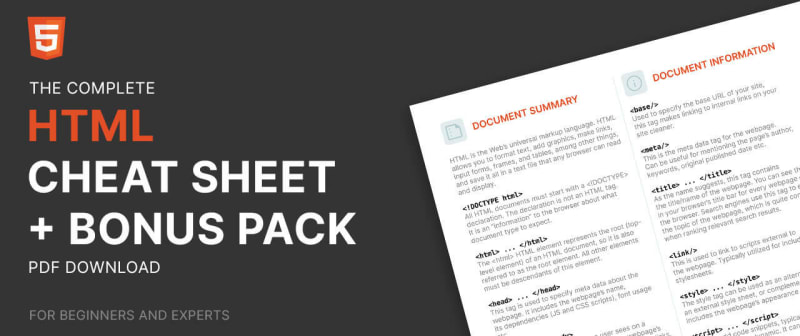Demystify HTML Syntax and Structure: The Ultimate Beginner’s Guide
As a beginner, understanding the structure and syntax of HTML can be intimidating. HTML is the foundation of every website and understanding it is crucial for anyone who wants to create a website. In this blog post, we’ll provide a beginner’s guide to understanding HTML structure and syntax.
HTML Structure
HTML stands for Hypertext Markup Language, and it’s used to structure content on a web page. HTML is made up of elements, which are used to describe the structure of a web page. An HTML element consists of a start tag, content, and an end tag.
For example, the following is an HTML element:
<p>This is a paragraph element</p>
The start tag is <p> and the end tag is </p>. The content between the start and end tags is the text “This is a paragraph element”. The
element is used to define a paragraph of text.
HTML Syntax
HTML syntax is the set of rules that dictate how HTML elements should be structured. Here are a few key points to keep in mind when working with HTML syntax:
- HTML elements are surrounded by angle brackets (
<and>). - The start tag is written first, followed by the element content, and then the end tag.
- Most HTML elements have a closing tag, but some elements, like
<img>and<br>, do not require a closing tag. - HTML elements can have attributes that provide additional information about the element. Attributes are placed within the start tag and consist of a name and a value, separated by an equals sign.
Here’s an example of an HTML element with attributes:
<img src=“image.jpg” alt=“A picture of a cat”>
The <img> element is used to insert an image on the page. The src attribute specifies the path to the image file, and the alt attribute provides alternative text that will be displayed if the image cannot be loaded.
Conclusion
Understanding HTML structure and syntax is essential for anyone who wants to create a website. By understanding HTML elements, start tags, end tags, and attributes, you can create well-structured HTML code that will be easy to read and maintain. As you continue to learn HTML, keep practicing and experimenting with different elements to build your skills and confidence.
HTML Cheat Sheet
If you want to learn more about HTML, grab my cheat sheet which is available on Gumroad.
This product will assist you in learning the fundamental HTML elements in your Web Development journey. It is intended for both beginners and experts who want to brush up on their knowledge.
All of the resources are structured and organised in a straightforward and easy-to-read manner. They include interactive external links, images, tag names and code snippets to help you understand the topics better.
Further reading
Looking for a more detailed definition of HTML5? Then check out – HTML5 – MDN Web Docs Glossary: Definitions of Web-related terms | MDN
See also
What is HTML? Basics Explained
How to Begin with Semantic HTML
How to Create an HTML Boilerplate
If you liked this article, then please share. You can also find me on Twitter for more updates.






Top comments (0)